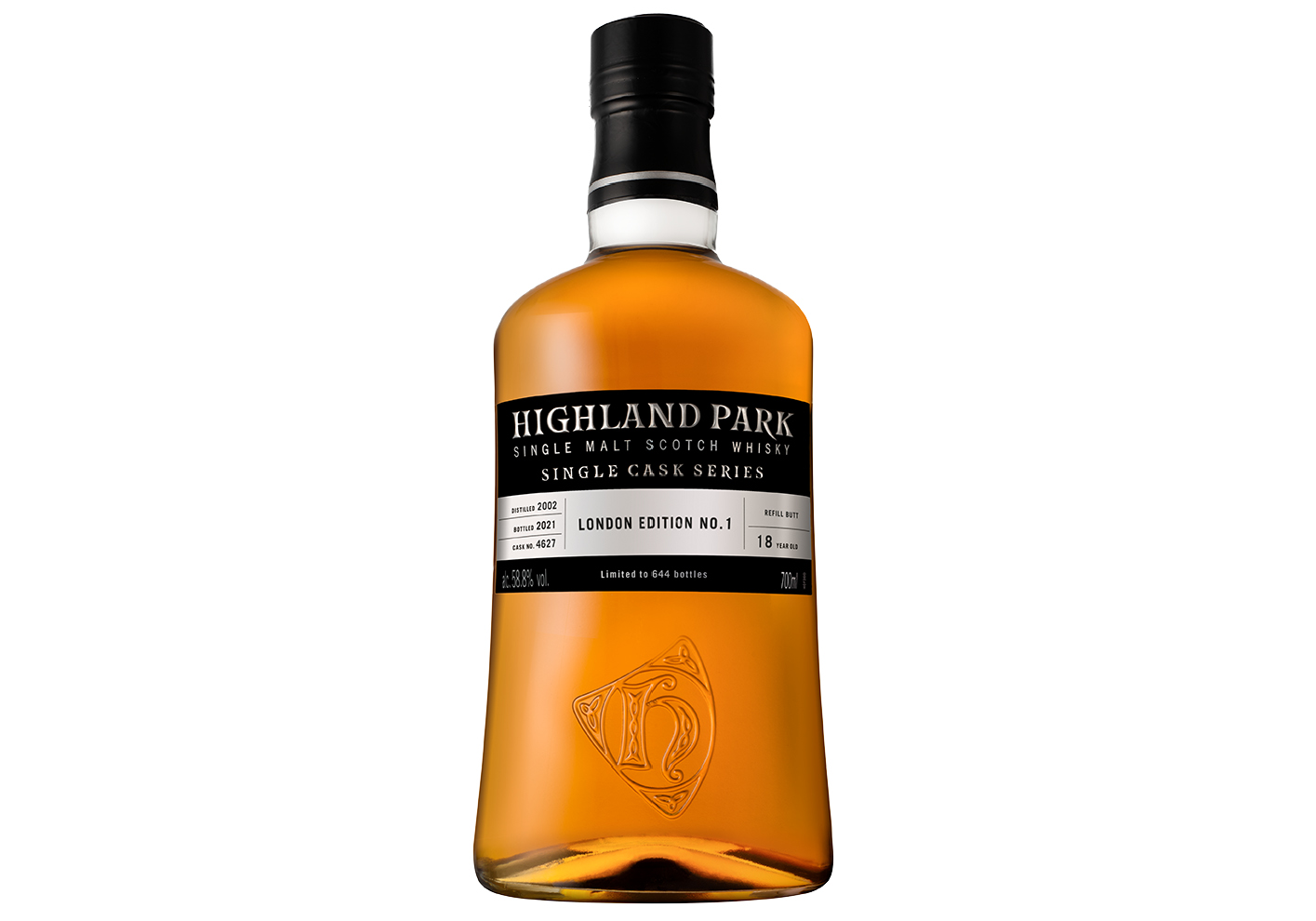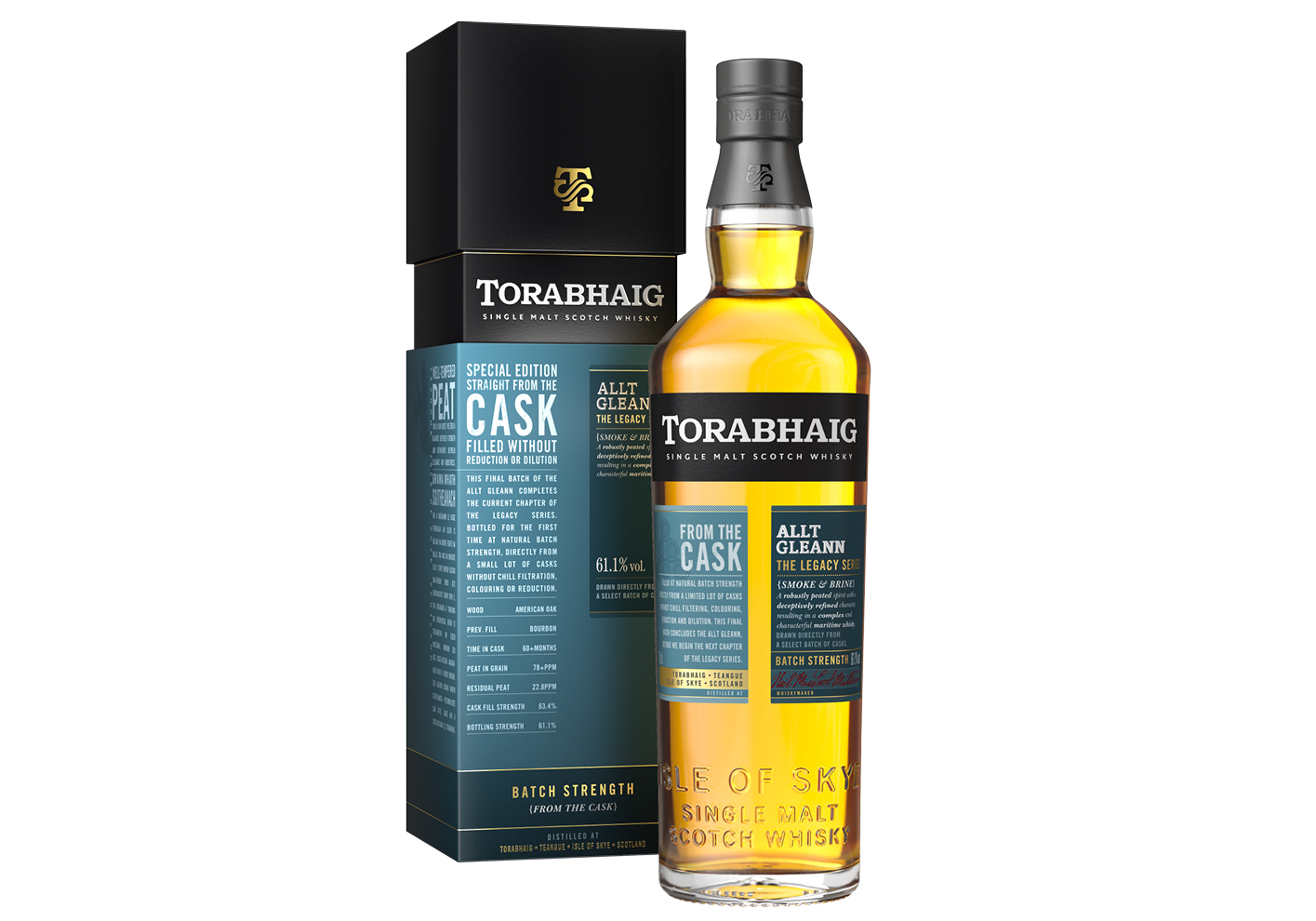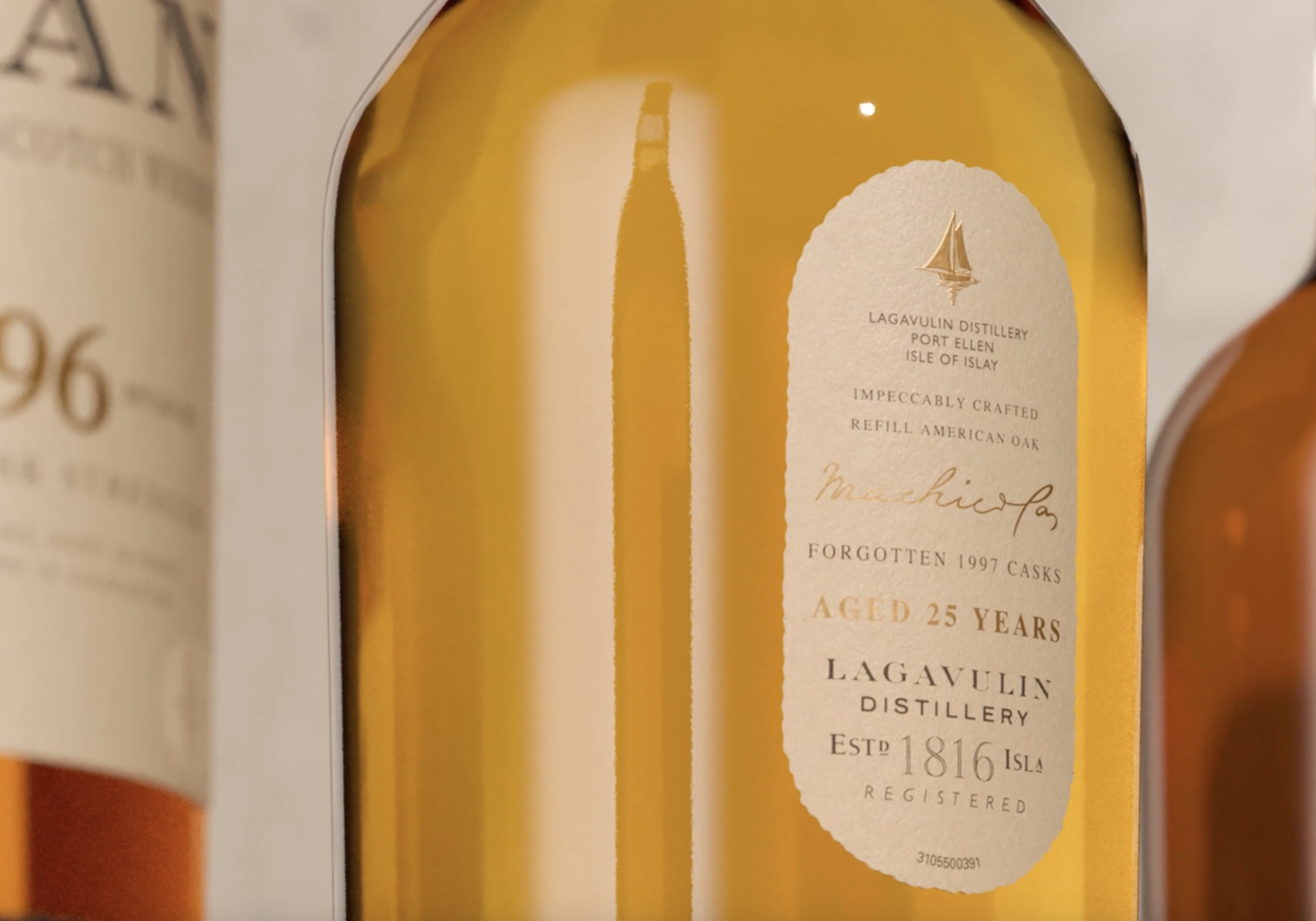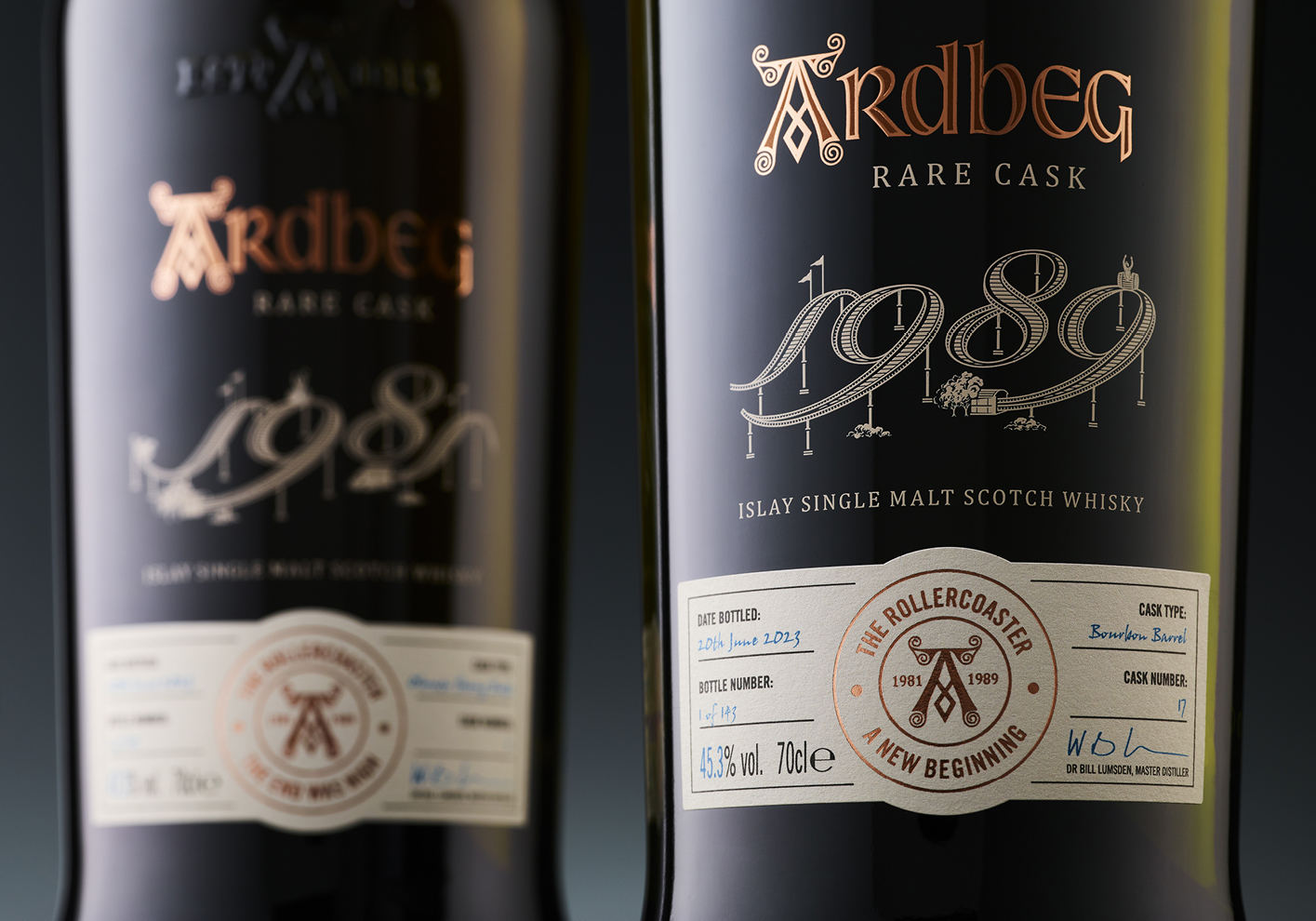WORDS
Chris Madigan
Smoky, peated whiskies tend to be regarded as Marmite – loved or hated as a binary choice. But not all smoke is equal. Not every peated single malt is necessarily a “peat monster”. In fact, those who ‘hate smoky whiskies’ may well be misidentifying what they don’t like.
If you enjoy smoked salmon or barbecues yet hate (most) single malts from Islay, the chances are you shouldn’t be put off by mention of smoke in tasting notes. It’s more likely that you don’t like a phenolic whisky. Phenols are chemicals that give you those medicinal, TCP, burning runner notes from a peated whisky. However, the phenolic levels are largely dependent on the make-up of the peat (among other factors). The peat on Islay includes a lot of millennia-old seaweed – high in phenols; Highland peat, more wood and foliage – rather lower; Orkney peat, mostly sphagnum moss – also low.
Even then, a high phenolic ppm does not guarantee a whisky will taste like a burning tar pit. The smoky character can be more reminiscent of bonfires or hearth fires; a distant drift of smoke or a cloud of it; or combine with umami or sweet notes to remind you of bacon, toasted brioche, smoked mackerel or grilled corn on the cob. There is subtlety to smoke, as this range of smouldering successes, released this year, demonstrate…

Bladnoch
Outside of the familiar smoky islands off the west and north coast of Scotland, many distilleries traditionally ran “a week of peat” (and some still do). They would distil peated barley just before the stills went quiet for a period of cleaning (otherwise residual phenols would remain in the system). Bladnoch distillery in Galloway, in the far southwest of Scotland, has a set-up that actually allows it to switch from unpeated to peated at any time without contamination. As a result, it can offer a smoky whisky, Alinta, plus a more limited edition Alinta Reserve, in its core range.
Nick Savage, the master distiller, has also put aside 15 individual casks of peated malt whiskies, to be bottled in batches of three over five years – the first being three barrels from 2009. Each is an exploration of a different cask influence, on top of exploring a smoky take on Lowland whisky.
The Lowland style – usually light, grassy, with gentle spices, like a ginger snap biscuit, and sweet toffee notes – is particularly suited to peating… sweet and smoky is a great combination. Each of the Peated Collection Single Casks 2023 then takes it in different directions. There’s a really accessible Rum Cask (2023/01), which has sugary treats all over it – sugar cane, fragrant lavender cake, the slightly floral creaminess of marshmallow, with caramelisation from holding it in a campfire. The Sherry Hogshead (2023/02) is a roaring log fire with hot spices – fried Christmas pudding on Boxing Day. And the Bourbon Barrel (2023/03) a freshly torched creamy vanilla crème brûlée.
Only around 250 of each are available. This is going to be interesting over the next few years.
Bladnoch Peated Single Casks, all £200; bladnoch.com

Highland Park
Far up north, beyond John O’Groats and over the sea to Mainland, Orkney, Highland Park is a place apart. And so are its methods. The distillery has its own floor maltings, a rarity these days – and even more unusually, the barley is turned by hand as it germinates, before being dried by peat smoke. But Orkney’s mossy, heathery peat creates a perfumed, incense-like smoke.
Ordinarily, the master whisky maker, Gordon Motion, would vat different batches of single malt from different years (with the youngest giving the whisky its official age) in order to create a consistency in the style of gently aromatic smoke. For the Single Cask Series, though, he cannot do that. Instead, he has to find an individual barrel that reveals ‘a unique aroma, an outstanding character or simply a superb example of Highland Park’s uniquely complex balance of flavours’.
The edition released recently is called the London Edition. Apparently, its ‘diverse yet harmonious flavours’ reminded Motion of our fair city – which is perhaps generous. The 18YO single malt (distilled in 2002; bottled in 2021) was aged in a refill sherry butt. It shows its smokiness in the form of earthy petrichor, with a spicy dusting of nutmeg. On the palate, it has fragrant pear juice, aniseed and cedar wood, with a gentle peat reek and sweet spices that stick around.
The Highland Park London Edition, £390, from specialist retailers; highlandparkwhisky.com

Talisker
Talisker, from the Isle of Skye, is known for being as much briny as it is smoky. Its peat is sourced from a mixture of coastal and riverside bogs on the mainland. This tends to mean the effect is less “medicinal”; what’s more, there tends to be a waft of smoke rather than a full cloud.
Talisker’s owners, Diageo, produce two collections of one-offs every year. Special Releases are generally in the £100 to £250 range. The full Prima & Ultima Collection (older, rarer whiskies representing, as the name suggests, firsts and lasts) costs £45,000 but, this year, individual bottles have been made available – albeit in very limited numbers.
From the Special Releases 2023 Collection, the non-age statement Talisker is finished in a combination of ruby, tawny and white port casks. As befits the whisky “made by the sea”, there is the whiff of the stoker feeding the coal furnace in the smoke character of this dram. And to continue the maritime theme, a spray of brine over hot cocoa steam. On the palate, it is surprisingly sweet – if any confectioner makes a white chocolate version of a fruit and nut bar, it’s that. Smoked almonds tangle with developing grape notes as it lingers.
The 1976 Talisker in the Prima & Ultima Collection is, at 46YO, the oldest ever released. It comes from the summer of that year, during the great heatwave. That heat expanded the metal of the still, increasing copper contact and releasing more fruit flavours into the new-make spirit. Nearly half a century later, the peat smoke has faded to a little flurry of stirred up ash on a nose that is dominated by creamy fudge. Then, on the tongue, a mixed orchard: peaches, plums, pears and apples. Towards the end, warm spices and a hint of spearmint chews pop up.
Talisker Special Release 2023, £120, and Prima & Ultima 2023, £6,000; available from Justerini & Brooks

Torabhaig
Destined forever to be “the new distillery” on Skye (when it opened in 2017, it was the first to do so since Talisker in 1830), Torabhaig will eventually have long-aged whiskies, but currently nothing is aged over six years. However, that doesn’t mean that it is producing peat whiskies that punch you in the gob – the non-age-statement single malts it is releasing are finding subtlety through other means than time.
The studied approach to peat is summed up on the website: ‘There are many, many faces, and moods to peat, all affected by the peat itself and how it is used in the kilning process to dry the malt, how you mash the peated barley and the water you use, how you ferment, the shape of the stills, where you cut… we could go on…’
Last year saw the release of Allt Gleann, an evolution of the previous year’s inaugural release, and a whisky that caught the attention of experts. This year came Allt Gleann Batch Strength, which weighs in at a hefty 61.1% (so can stand a little watering). It is everything you’d hope from a Skye whisky. The smoke is a crackling bonfire on a Hebridean beach, built from driftwood, with sea salt residues. On the palate, it has notes of salted caramel and roasting coffee, turning to liquorice toffee at the end.
Torabhaig Allt Gleann Batch Strength, £75; available from torabhaig.com

Lagavulin
This Islay distillery is known as one of the big smoke triumvirate (along with Ardbeg and Laphroaig) and tasting notes often associated with “Laga” are the likes of tarmac, salted anchovy, tyre fire and wet tweed. Hardly appetising unless you’ve tasted it. But there’s a reason Lagavulin 16 is mentioned with reverence. And long aging, or an unusual finish, can do surprising things to the peat phenols, as the Lagavulins in 2023’s Special Releases and Prima & Ultima Collection demonstrate.
The Special Releases 2023 Lagavulin is a 12YO finished in Don Julio Añejo tequila casks. The smoke is a distant hint on a nose that is strong with bright iodine and deep fountain pen ink, plus – more appetisingly – lemon and herb dressing. The citrus and aromatic greenery (likely thanks to the tequila influence) continue on the palate, but are joined by plum crumble and custard, and tarte tatin just saved from the oven in time. There is more fragrant smoke on the finish, like a burning sage cleansing ritual.
The 2023 Prima & Ultima Lagavulin is a 25YO aged in refill American oak – the last liquid left from 1997. Imagine being awoken by what might be bacon cooking downstairs… that’s the smoke element on this tasty treat. And the palate delivers that bacon sandwich to you in the comfort of your bed – a mouthful of smoked rashers, all umami richness wrapped around a smoky, savoury crunch. Balsamic sweetness comes through too – a touch of Worcestershire sauce.
Lagavulin Special Release 2023, £155, and Prima & Ultima 2023, £2,400; available from Justerini & Brooks

Ardbeg
Further proof that even an Islay distillery with a reputation for big smoke doesn’t simply lob smoke bombs around willy-nilly comes from Ardbeg. In the core range, the Wee Beastie’s youthful aggression, blowing smoke in your face, is miles from the mellow barbecue char of Uigeadail.
And to show that a smoky whisky has its place at the top table of limited-edition rare bottlings aimed at the serious collector, this winter sees the launch of a set of 143 pairs of whiskies in a Scottish oak presentation case designed by John Galvin.
Ardbeg The Rollercoaster is not a collaboration with Ronan Keating, but a reflection of the turbulent history of the Islay distillery. The first whisky in the set was distilled in 1981, two weeks before the distillery closed on 25 March, and is the last stock from that year. Ardbeg was revived late in 1989, and the second whisky in this set was distilled on 6 December. Much had changed – Roxy Music’s tribute to John Lennon was no longer No.1; New Kids on the Block were.
Similarly, the two Ardbeg eras were different in style – in 1981, there was a much lighter peating to the malt than when it returned eight-and-a-half years later. Bear in mind though that 42 and 34 years of aging, respectively, mean that even the higher level of peat in the 1989 has been mellowed with time.
The 1981 whisky was originally aged in bourbon casks, before being transferred to an oloroso sherry cask. There are notes of honey-baked ham and hot leather, plus a lot of booze-soaked figgy pudding, and burnt sugars. The 1989 offers smoked paprika and a shake of pepper, plus slightly medicinal yet sweet flavours, aniseed balls and throat lozenges.
Ardbeg closed again for a year between 1996 and 1997, when it was revived by the Glenmorangie Company, later to come under the LVMH umbrella. So perhaps we can expect The Rollercoaster 2: Let’s Go Round Again in a few years’ time.
Ardbeg The Roller Coaster, €100,000 (£85,000); enquire at ardbeg.com/therollercoaster





